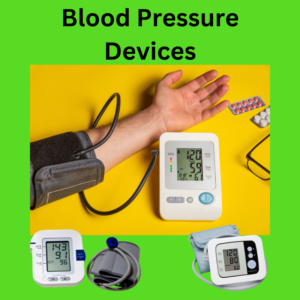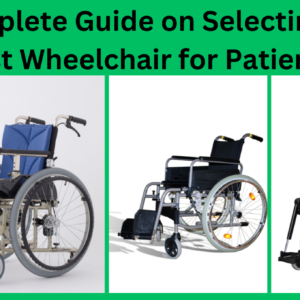A Beginner’s Guide to Nebulizers: Effective Respiratory Care Made Simple
Nebulizers: What Are They?
A medical gadget called a nebulizer turns liquid medication into a tiny mist so that people with respiratory disorders can more easily inhale it straight into their lungs. It is an effective tool for treating and managing a variety of respiratory conditions.
Meaning and Objective
The main purpose of nebulizers is to administer drugs for lung illnesses, including asthma and chronic obstructive pulmonary disease (COPD). Nebulizers guarantee that the medication enters the airways more effectively than oral treatments do.
function in respiratory medicine
Nebulizers give patients who have trouble breathing rapid relief by delivering the drug directly to the lungs, which are the root of the illness. They are essential for treating respiratory disorders, both acute and chronic.
Is a nebulizer necessary?
It is advised to use nebulizers for:
young children and infants who are incapable of using inhalers.
elderly patients with poor hand skills.
people who suffer from serious respiratory disorders.
How Do Nebulizers Operate?
Although nebulizers are simple to use, they are essential to providing successful treatment.
The Fundamental Elements
The compressor, the nebulizer’s engine, is in charge of producing the airflow that transforms liquid medication into mist.
Medicine Cup: Preserves the liquid drug till it turns into a mist.
The patient can breathe in the mist by wearing a mask or mouthpiece.
The Nebulization Process
The nebulizer creates a mist that the user inhales through a mask or mouthpiece by compressing air or ultrasonic vibrations through the liquid medication in the medicine cup.
Medications Used in Nebulizer Types
Typical drugs include:
Bronchodilators help ease the muscles in the airways.
steroids for inflammation reduction.
Airways can be moistened using saline solutions.
Nebulizer Types
Nebulizers come in many varieties to meet different demands. Users can make better selections if they are aware of their options.
Nebulizers with jets
These are the most popular; the mist is made by compressed air. Although they are less expensive, they could be bulkier and noisier.
High-frequency nebulizers
These devices, which nebulize medication using ultrasonic waves, are more effective and quiet, but they might not work well with other prescriptions.
Nebulizers with mesh
Mesh nebulizers are small and lightweight devices that create mist using a fine mesh. Although they are typically more costly, they are great for travel.
Home vs. Portable Nebulizers
Portable nebulizers are battery-powered and lightweight, making them ideal for use while traveling.
Larger equipment made for frequent usage at home is known as a home nebulizer.
Advantages of Nebulizer Use
Nebulizers provide several benefits, particularly for people with severe or chronic respiratory conditions.
Efficient Administration of Medicines
Compared to oral treatments, nebulizers guarantee that medication is administered straight to the lungs, offering quicker and more efficient relief.
Ideal for People of All Ages
Nebulizers are simple to use and can be customized for patients of all ages, from newborns to the elderly.
Beneficial for Long-Term Illnesses
Nebulizers offer steady and dependable relief for ailments such as severe asthma or COPD, enhancing users’ quality of life.
Who Is a Nebulizer Beneficial For?
Nebulizers are helpful in a variety of circumstances and are not only for chronic illnesses.
Individuals suffering with asthma
Nebulizers are frequently lifesavers for asthmatics, providing prompt relief during severe episodes.
People who have COPD
They assist people with COPD in controlling symptoms including wheezing and shortness of breath.
Cystic Fibrosis Cases
Nebulizers are essential for releasing mucus, which facilitates lung clearance.
Handling Immediate Respiratory Conditions
Nebulizers are also used for short-term ailments such as acute allergies or bronchitis.
How Is a Nebulizer Used?
At first, using a nebulizer could seem intimidating, but with repetition, it becomes instinctive. To get the most out of your therapy, adhere to our detailed guidance.
Detailed Instructions
Assemble Your Tools: Make sure you have a clean area to work on, the nebulizer, the medication, and a mask or mouthpiece.
Keeping hands clean helps keep the drug and gadget from being contaminated.
Get the medication ready: Pour the recommended dosage into the medicine cup after measuring it. Only take the drugs that your doctor has prescribed.
Put the nebulizer together: Attach the tube to the compressor and connect the medicine cup to the mouthpiece or mask.
Switch the nebulizer on: To begin producing the mist, turn on the compressor.
Breathe in the drug: Hold the mouthpiece firmly between your lips or cover your mouth and nose with the mask. Until the medication is done, take deep, even breaths.
Wash the equipment: To maintain hygiene, wash the mouthpiece, mask, or medicine cup with warm, soapy water after each use.
Tips for Cleaning and Maintenance
Use a vinegar-water solution to disinfect components once a week, or follow the manufacturer’s instructions.
To guarantee optimum operation, routinely replace the tubing and filters.
When not in use, keep the nebulizer somewhere dry and clean.
Typical Drugs Using a Nebulizer to administer
Depending on the patient’s condition, nebulizers can administer a range of drugs. These drugs are essential for treating respiratory conditions.
Bronchodilators
Breathing becomes easier when bronchodilators, such as albuterol, relax the muscles surrounding the airways. They are frequently used for long-term ailments like COPD or during asthma episodes.
Steroids, including budesonide, are frequently used to treat asthma and other inflammatory disorders over the long term because they lessen airway inflammation.
Antibiotics
A nebulizer can be used to provide antibiotics directly to the respiratory system for bacterial lung infections. This technique guarantees a high drug concentration in the afflicted area.
Solutions with Saline
Saline solutions are non-pharmacological remedies that facilitate coughing by moistening the airways and releasing mucus.
What’s the Difference Between an Inhaler and a Nebulizer?
Inhalers and nebulizers both administer medicine to the lungs, but they work differently and are used for different purposes.
The Best Time to Use a Nebulizer
Nebulizers are frequently suggested for those who are unable to utilize inhalers because they are too old, too sick, or have trouble coordinating their inhalations. They are also more effective at administering higher dosages of medicine over an extended length of time.
Evaluating Usage and Efficiency
Nebulizers: Although simple to use, each treatment takes ten to fifteen minutes.
Inhalers: Fast and portable, yet good delivery requires the right technique.
Selecting the Appropriate Nebulizer
Choosing the best nebulizer can be stressful due to the abundance of alternatives. Here are some pointers to help you make a wise decision.
Things to Take Into Account
Nebulizer Type: Depending on your requirements, pick between mesh, jet, or ultrasonic nebulizers.
Portability: A portable nebulizer is the best option for people who travel frequently.
Noise Level: Compared to jet models, mesh and ultrasonic nebulizers are quieter.
Ease of Use: Make sure the gadget is easy to put together, maintain, and use.
Top Choices for Adults and Children
For kids: Seek out nebulizers with masks and designs that are kid-friendly.
Adults: Mesh nebulizers and other small, effective models are strongly advised.
Benefits and Drawbacks of Nebulizers
Like any medical instrument, nebulizers have advantages and disadvantages despite their immense utility.
Benefits
efficient in getting medicine straight into the lungs.
All ages of patients can benefit from it.
beneficial for serious respiratory disorders.
able to administer a range of drugs.
Possible Negative Effects
less portable and bulkier than inhalers.
need batteries or electricity to function.
require routine upkeep and cleaning.
How to Maintain Your Nebulizer
To maintain your nebulizer’s effectiveness and guarantee safe treatments, proper maintenance is necessary.
Guidelines for Regular Cleaning
After every use, wash the mouthpiece, mask, or medicine cup with warm, soapy water.
After giving everything a thorough rinse, let it air dry on a fresh towel.
Changing Out Components
Filters should be changed every one to three months, or as the manufacturer advises.
Regularly check tubing for wear indicators and replace it if necessary.
Concluding Remarks on Nebulizer Use
For people with respiratory disorders, nebulizers are life-changing tools. They offer quick and efficient treatment by supplying medicine straight to the lungs. Using a nebulizer correctly can improve your quality of life whether you’re recuperating from an acute respiratory condition or managing a chronic sickness.
Please note: If you want nursing wellness and patient care-related items, then click below my website link and get items easily: https://diseasewellnessbounque.in OR https://amzn.to/40lXGaM my amazon shop






Reviews
There are no reviews yet.